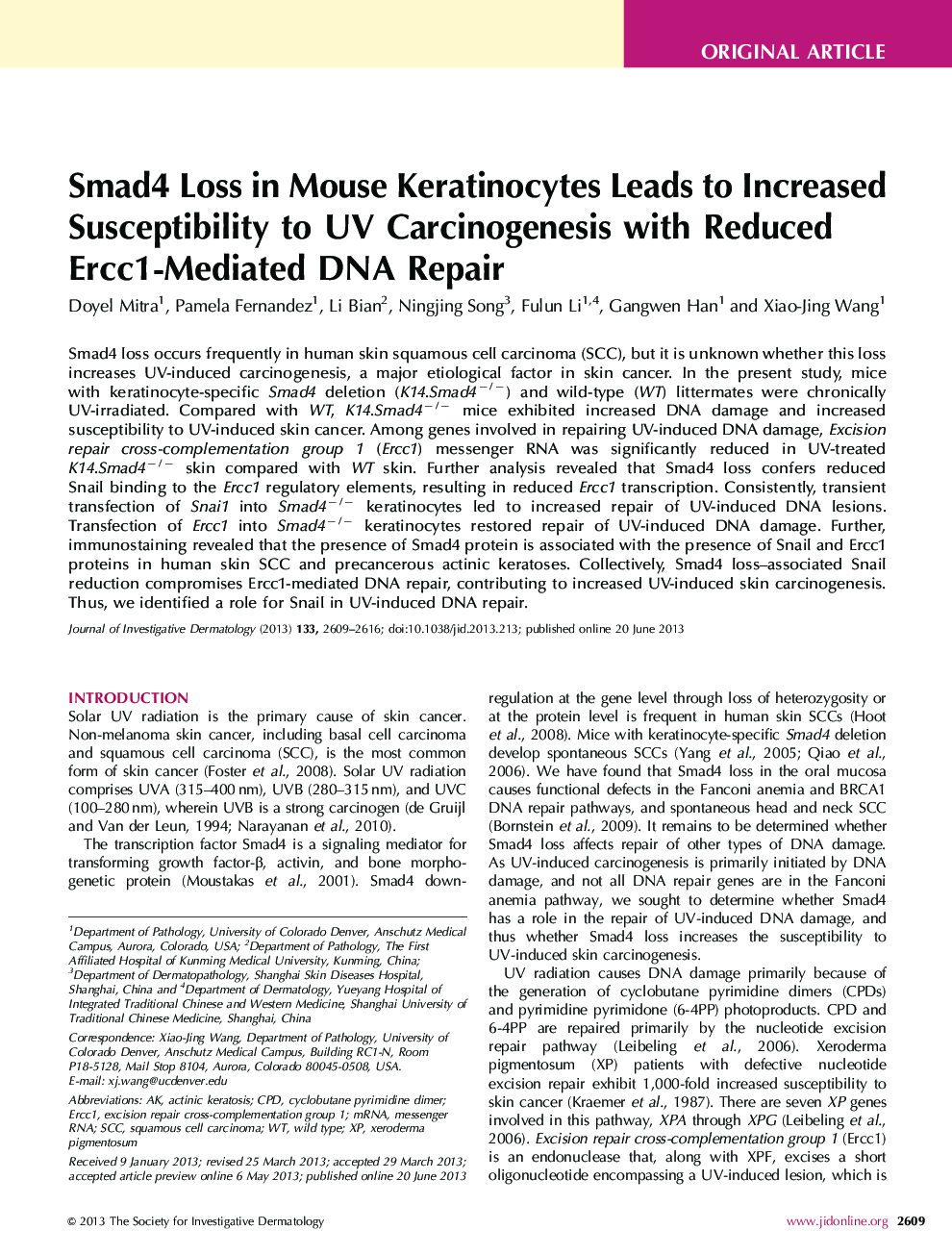| Article ID | Journal | Published Year | Pages | File Type |
|---|---|---|---|---|
| 6077077 | Journal of Investigative Dermatology | 2013 | 9 Pages |
Abstract
Smad4 loss occurs frequently in human skin squamous cell carcinoma (SCC), but it is unknown whether this loss increases UV-induced carcinogenesis, a major etiological factor in skin cancer. In the present study, mice with keratinocyte-specific Smad4 deletion (K14.Smad4â/â) and wild-type (WT) littermates were chronically UV-irradiated. Compared with WT, K14.Smad4â/â mice exhibited increased DNA damage and increased susceptibility to UV-induced skin cancer. Among genes involved in repairing UV-induced DNA damage, Excision repair cross-complementation group 1 (Ercc1) messenger RNA was significantly reduced in UV-treated K14.Smad4â/â skin compared with WT skin. Further analysis revealed that Smad4 loss confers reduced Snail binding to the Ercc1 regulatory elements, resulting in reduced Ercc1 transcription. Consistently, transient transfection of Snai1 into Smad4â/â keratinocytes led to increased repair of UV-induced DNA lesions. Transfection of Ercc1 into Smad4â/â keratinocytes restored repair of UV-induced DNA damage. Further, immunostaining revealed that the presence of Smad4 protein is associated with the presence of Snail and Ercc1 proteins in human skin SCC and precancerous actinic keratoses. Collectively, Smad4 loss-associated Snail reduction compromises Ercc1-mediated DNA repair, contributing to increased UV-induced skin carcinogenesis. Thus, we identified a role for Snail in UV-induced DNA repair.
Related Topics
Health Sciences
Medicine and Dentistry
Dermatology
Authors
Doyel Mitra, Pamela Fernandez, Li Bian, Ningjing Song, Fulun Li, Gangwen Han, Xiao-Jing Wang,
